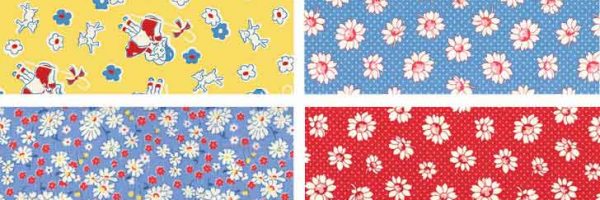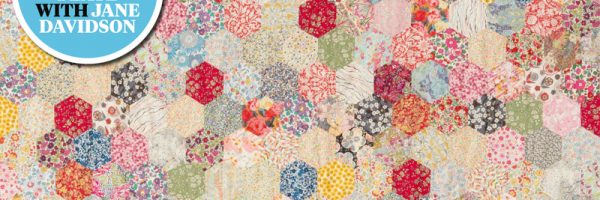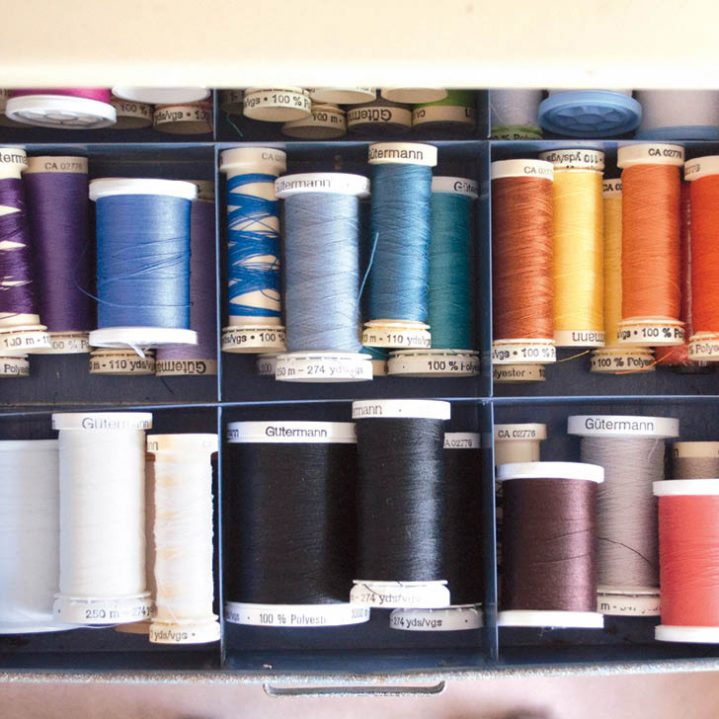
10 Tips for a More Functional Sewing Space
Allie Olson has turned a small second bedroom in her rental house into her dream workroom and sewing space. And she’s happy to share her tidy-up tips with Cosy PROJECT to show you how, with a few strokes of her magic organisational wand, she’s turned clutter into calm and frightful into functional.
For some time now, I’ve wanted to show off my Indiesew HQ, where I spend my time sewing, blogging and writing emails as I enjoy the hours I spend here and the creative energy it gives me. So today I’m showing you my sewing space, where I sew, fulfil orders and photograph and write blog posts.
It’s a small bedroom, only 4 x 3 metres (12.5′ by 9.5′), on the second floor of my dated early-‘90s rental house. But I love it. And that’s because I’ve finally figured out what my ideal sewing space needs. If your sewing space feels a bit ‘meh’, then follow my tips what have completely transformed the hours I spend at my sewing machine.
1. Decide on Boundaries
I don’t have kids, but I do have two needy dogs. As soon as we moved into this house, I made it an absolute, no-exceptions rule that dogs were not allowed in my sewing room. While I love their company, now there’s zero dog hair to deal with, I’m not tripping over sleeping dogs in the middle of the floor, and honestly, I’m less distracted. And if you have kids, think about giving them a dedicated space to play while you sew.
2. Play with the Layout
Experiment with where you place your essential tools in your sewing space. I never expected the placement of my sewing desk, ironing board and cutting table to affect how much I enjoy my time sewing. But every sewer’s hobby looks a bit different. For me, if I can reach my ironing board and cutting table without getting out of my rolling chair, I’m a happy camper. Constantly getting up because I forgot my thread snips or pins on the ironing board is my pet peeve. The upside of sewing in a tight space is that this isn’t hard to achieve.
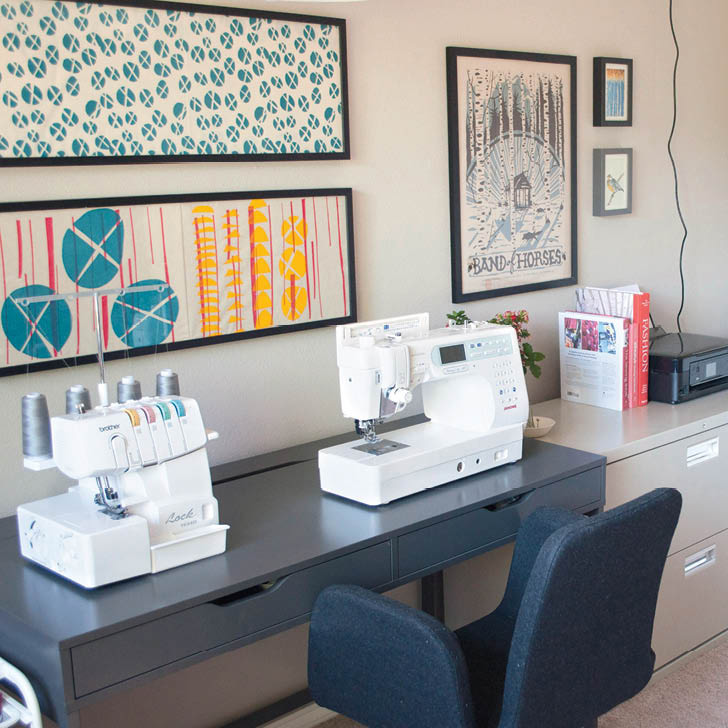
3. Install Adequate Lighting
In our current place, there are no overhead lights which meant I had to install some serious ad-hoc lighting so I could see what I’m doing when I sew. I sew with a simple Ikea overhead light, which plugs into the wall outlet. It illuminates the area over my sewing machine and overlocker. I also have a floor lamp that lights the sewing space by my cutting table and ironing board so that I can see when I’m pressing or pinning seams.
Sew the English paper pieced Anna Quilt in your sewing space
4. Get Your Sewing Space Organised
Being creative doesn’t always jive with being organised. But there are a few ways of bringing order that will make storing and accessing your sewing supplies in your sewing space so much easier. Source a few organisers to store your threads, scissors, fabric markers and other necessities. There are any number of options here – check out store-bought possibilities as well as any spare boxes and containers, and re-think how they could be used.
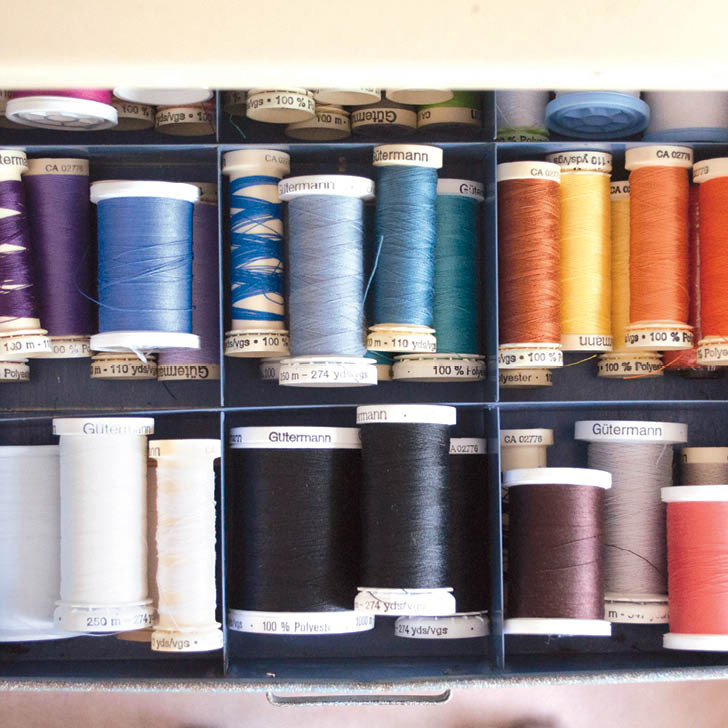
5. Have the Essentials Handy
Keep your most-used tools an arm’s reach away. I’m constantly using my pressing tools and rulers, so those live in a small metal box on a shelf within easy reach in my sewing space.
The same goes for the sewing books that I reference again and again. I love my Sewing Bible and it covers most sewing techniques that I often forget (blind hems, mitred corners, etc). I keep these next to my printer so I don’t have to go searching for them when I need a quick answer.
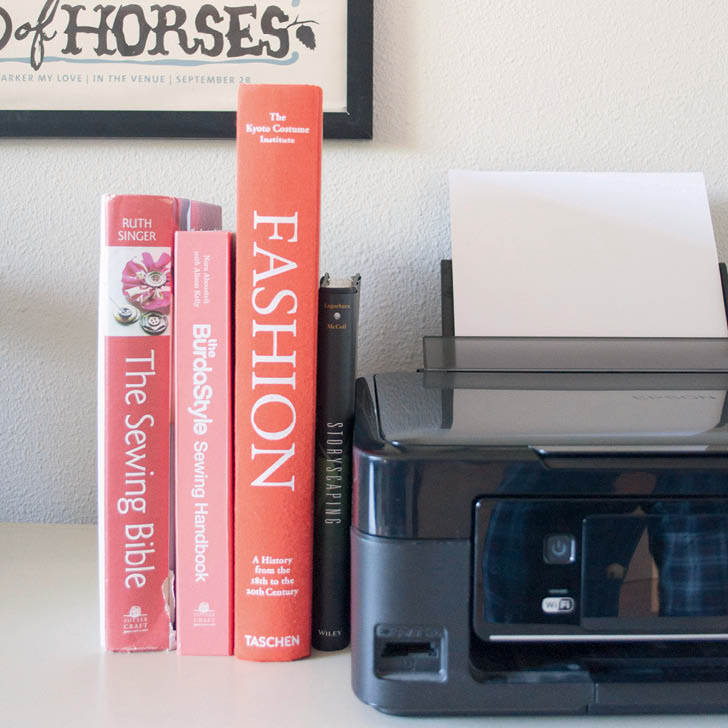
6. Catalogue your Sewing Patterns
Since starting Indiesew, large format pattern storage has stumped me. I trace my patterns onto cheap interfacing, so I also have the individual patterns pieces to keep contained. We have nearly 100 patterns taped together and traced, so this issue was especially important for my sanity.
I recently bought a used, lateral filing cabinet (with plans to paint it white). I’ve created a file folder for every designer, too. Finally, I have placed the pieces for every pattern in labelled, manila envelopes. The bottom drawer of the filing cabinet keeps the taped-together, rolled patterns out of sight.
Try the Thinking of England Quilt by Siobhan Rogers
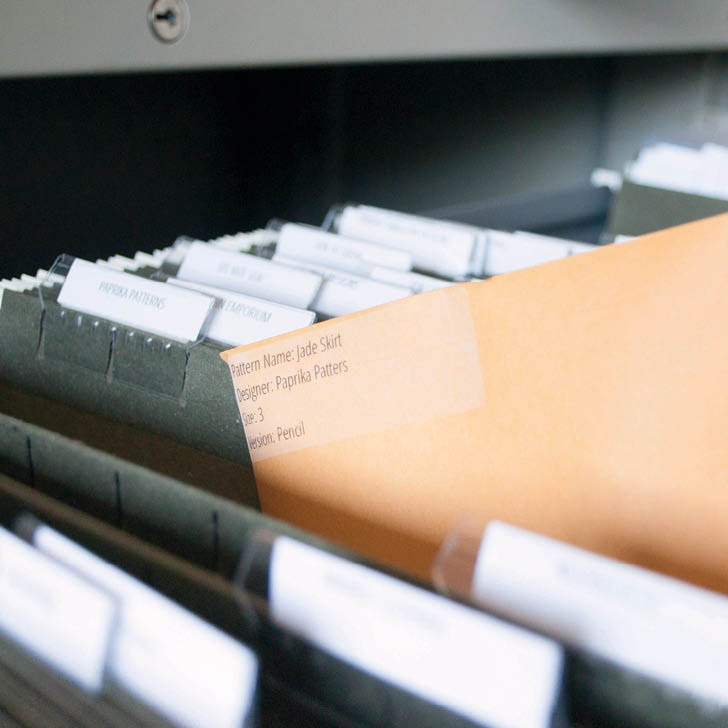
7. Adequate Workspace
A large workspace (sewing desk and cutting table) can completely change your sewing hobby. Last week, I bought a 150 x 75cm (60” x 30”) cutting table, and it is amazing. As a beginner, I’m a total proponent of cutting your fabric wherever you need to. The floor, dining room table or kitchen island are all fine but a large dedicated cutting table in an allocated sewing space will make your life so much easier.
The same goes for the surface you sew on. If you use both an overlocker and a sewing machine for most projects, be sure your workspace can accommodate both pieces of equipment. I bought my desk from Ikea and has great hidden storage for cords and pedals in the back. But I’ll admit that even this desk is a bit small for both machines.
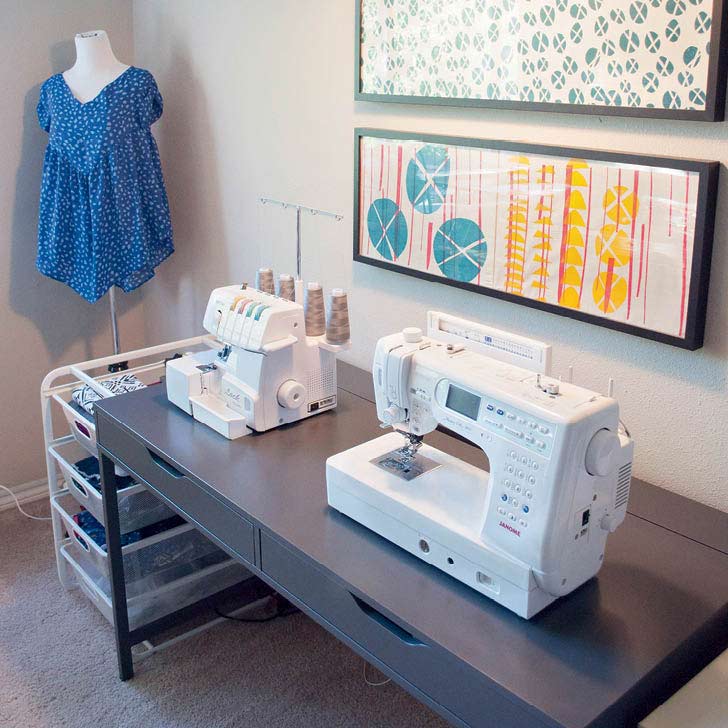
8. Display your fabric
Every stitcher I know organises her/his fabric stash a bit differently: My mother has several overhead cabinets of folded fabric piles; my oldest sister wraps her fabric around comic book boards; and my friend, Erin, hangs hers on special hangers kept in her closet.
Wherever you store your fabric, make sure it’s easy to view from one vantage point. I store my fabric in a vintage barrister bookcase in piles of related substrates.
If your fabric is hard to get to, you’ll likely never sew with it. Consider storing it in clear bins or behind glass, so you don’t have to rifle through it in search of the perfect fabric.
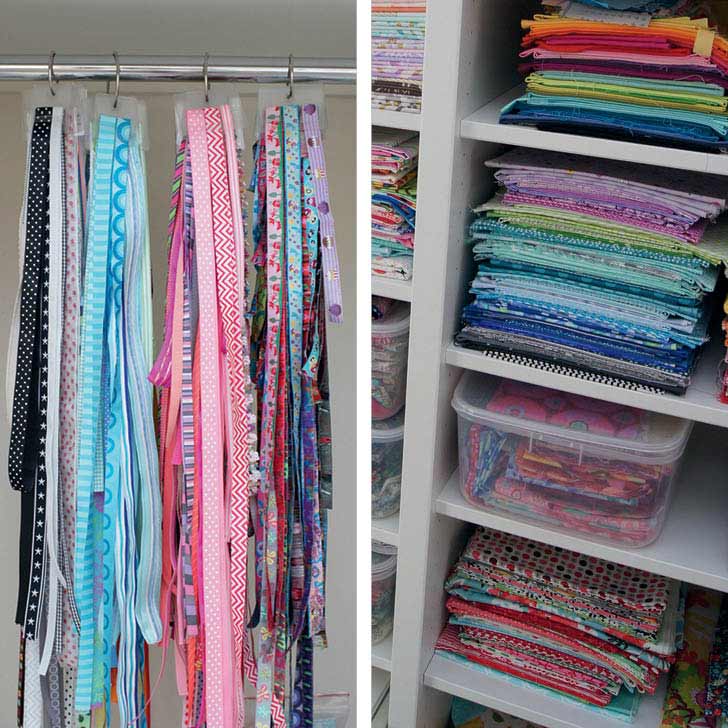
View 1930’s Inspired Fabrics
9. Load Up on Inspiration
This is probably a no-brainer for most of you, but don’t skimp on the lovely things! I have filled my sewing space with things that I find pretty, creations I’m proud of and items that just make me smile.
I’ve also hung prints with colours and shapes that make my heart sing. These long horizontal prints are from a screen-printing workshop I took in Australia. My dear friend Annie Bailey made the small frames.
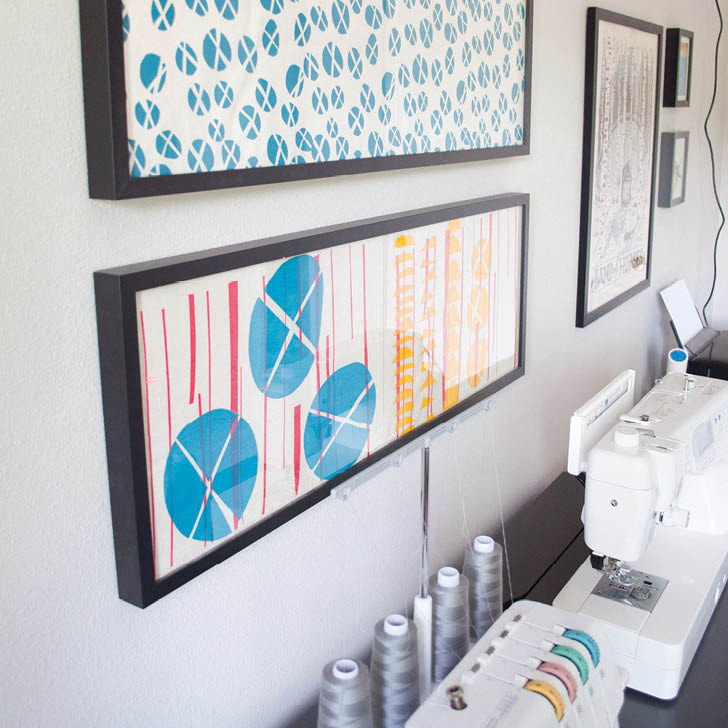
My vintage sewing machine is always on display. It’s not working right now, but perched on top of my bookcase it looks so cheerful despite some serious wear and tear.
Sew the Amity’s Garden Cot Quilt and Cushion Set in your sewing space
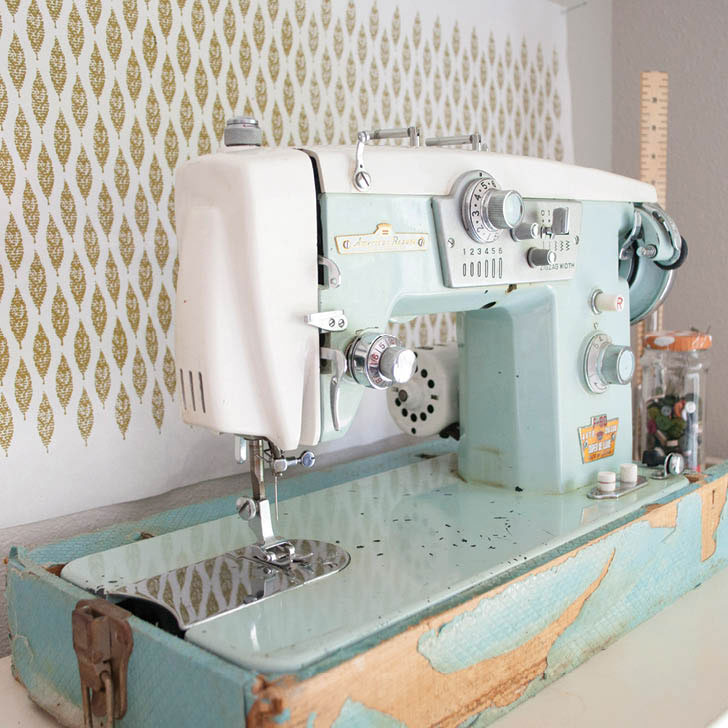
10. Love its Imperfections
I have yet to live in a house or apartment where my sewing studio was 100% perfect. I also always talk about my ideal space in a distant place of “when I own a house” or “when Indiesew has a cool, modern office”. But lately, I’m less focused on what’s lacking and more appreciative of what the space offers me.
I often think about how much sewing has gifted me (creativity, friendships, a business that offers me endless fulfilment). And I’m willing to bet you’re like me: If my only option was to sew in my garage or at a friend’s house, I still would.
Yes, my sewing room doesn’t have overhead lighting and I have packed its tiny closet full of clothing. But it’s a space for me to be creative. It’s offered me a hobby that I can get lost in for hours and a place to leave my messes. And that’s all the better for these few small tweaks, which have added comfort, satisfaction and a degree of ergonomic rationalisation.
Contact Allie Olson at Indiesew
Website: www.indiesew.com
Email: info@indiesew.com

